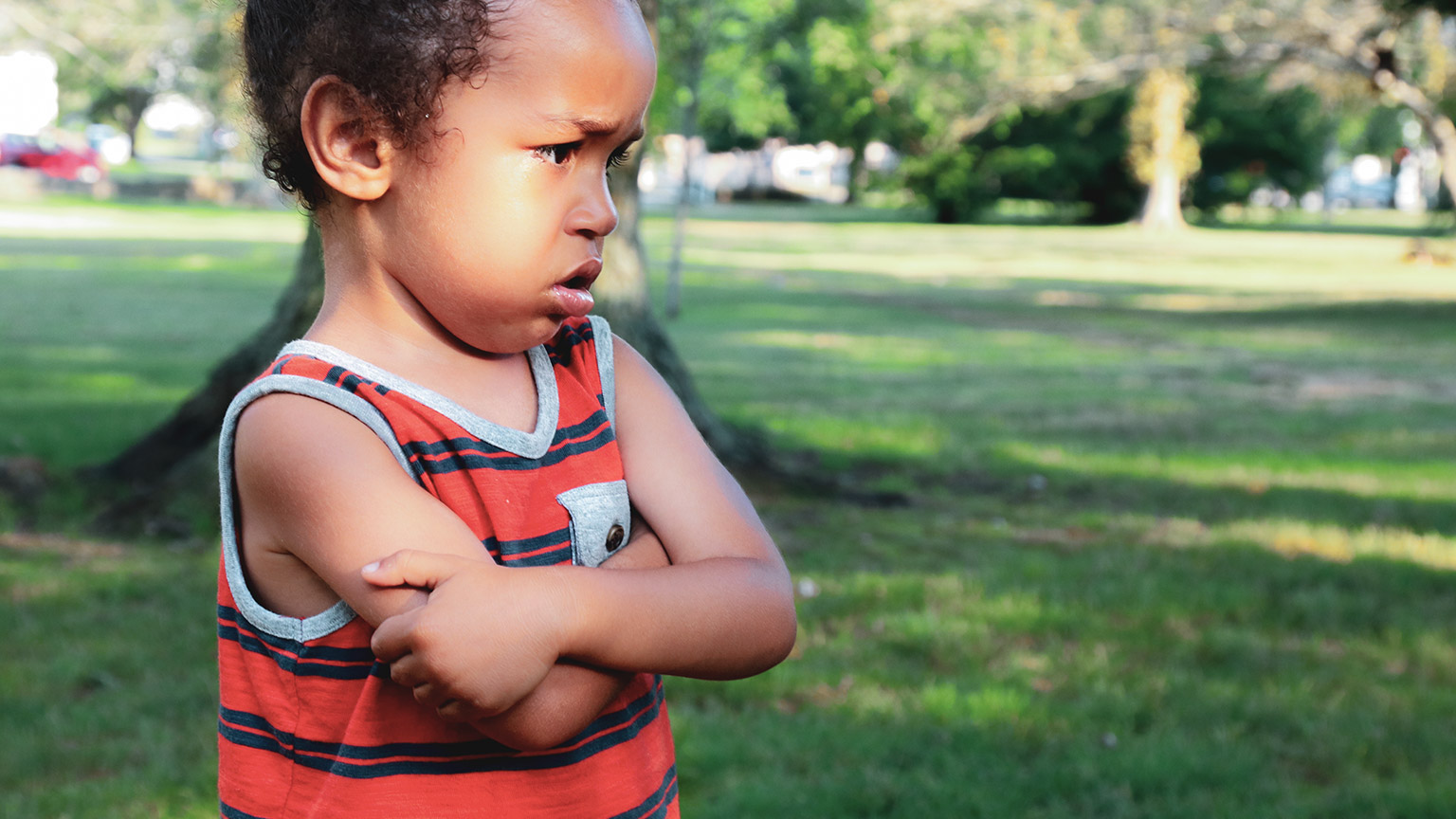Imagine that you have just told this child that it's time to leave the park. It looks like he's not very happy about that and could be on the verge of a meltdown. What would you do to encourage the child to leave the park calmly? The choice of response you make could lead to different outcomes. Will there be tears and tantrums or a change of attitude?
In this section, we'll talk about ways that you can guide children to behave appropriately.
Guiding children’s behaviour is an important aspect of caring for and educating young children. Positive strategies need to be developed to assist children to learn the right and wrong ways of behaving.
Corporal punishment and unreasonable discipline are not permitted in children’s services, not only because the child may be physically harmed but also because it nearly always has detrimental effects on the child’s self-esteem and feelings of security.
There are important obligations and legislation on children’s services in relation to guiding behaviour.
Children's services must:
- ensure no child being cared for or educated by the service is subjected to any form of corporal punishment or any discipline that is unreasonable in the circumstances.
- ensure that every reasonable precaution is taken to protect children being cared for or educated by the service from harm and any hazard likely to cause injury.
- have a policy about behaviour management (behaviour guidance) and it must be available for inspection at all times the service is open.
This is a snippet from the Education Act 1989:
Activity – Behaviour guidance policy
Ask your work placement centre/service for a copy of their behaviour management policy.
- Read it through (hopefully it won't be the first time!) with a critical eye.
- Does it do enough to describe the centre's commitment to guiding childrens' behaviour in a positive way? If not, what's missing?
- If so, describe the centre's approach to ensuring no child is subject to harm or any type of unreasonable discipline.
- Use the forum to share your work. Read the other posts, and place respectful comments haring your thoughts.
Every centre must have a behaviour guidance policy
Behaviour guidance is part of the educational or recreational programme in a children’s service. It occurs in all interactions and communication with children — not only when children engage in challenging behaviour.
The policy and strategies for behaviour guidance used by a children’s service may impact either positively or negatively on children’s behaviour. The service’s approach to behaviour guidance in daily practice has a major effect on learning outcomes for children.
The following sections provide direction for guiding children's behaviour.
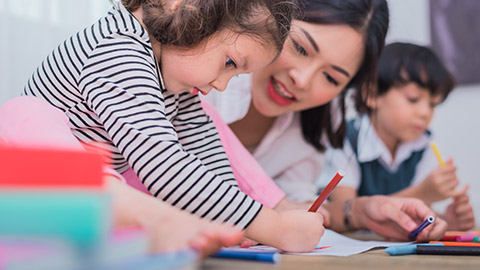
Research indicates that quality learning environments with sensitive, nurturing adults are essential for achieving positive learning outcomes for children. Adults must provide for the individual needs of children and respond to their interests. When staff members adopt a positive and active approach to behaviour guidance, they reduce challenging behaviours and encourage children to achieve success, develop positive self-esteem, and increase competence.
Activity - Drag and learn
Strategies for responding to ongoing challenging behaviour must comply with current legislation that states no child being cared for or educated by the service is subjected to any form of corporal punishment, or any discipline which is unreasonable in the circumstances.
For example, it would be considered unreasonable if a child were moved to a designated part of the room that is identified as a punishment area, such as a particular chair in the corner, or taken to another room and isolated from other children. It's not okay to isolate a child as punishment, as it can lead to further problems.
An article on Forbes.com called Isolating Children In School ‘Damages Mental Health’ refers to a recent study:
"The use of isolation as a disciplinary measure risks damaging children’s mental health and can end up making behavioral problems worse as students become more disaffected from school, according to the study. Instead, the charity urges schools to become more aware of the impact of trauma on their students, and to switch from punitive to positive behavior strategies."
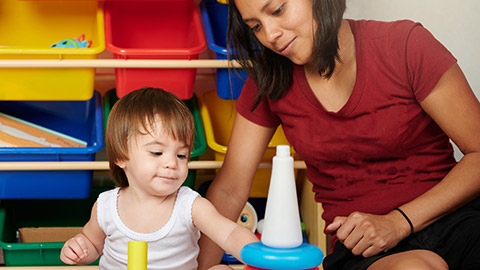
Children who play and learn in an environment that promotes positive social relationships are less likely to display inappropriate behaviours.
Positive relationships are developed when staff members:
- create healthy connections: Establish positive relationships with children.
- empower children: Encourage children to use language and other forms of non-hurtful communication to communicate their emotions.
- connect children to each other: Promote positive, empathetic relationships between children — assisting them in developing respectful relationships and communication techniques.
- allow for self-direction: Encourage and assist children to make decisions for themselves and provide opportunities for independence and self-regulation.
- set and communicate limits: Provide clear and reasonable limits and rules so that children know what is expected of them and follow through to help them comply. Discuss this with the children and use their contributions to communicate why we need appropriate limits and boundaries.
- show the children how it's done: Model the behaviours you want to see in the children.
- give positive feedback: Look for opportunities to give genuine praise for behaviour that matches what you want to see, particularly if it represents a positive change.
- build the children up: Focus on children’s strengths, achievements, initiative, and agency.
- support their new abilities: With praise, guidance, and direction, you can build on their emerging abilities.
- show empathy: Be understanding and supportive – acknowledge children’s emotions.
- promote social responsibility: Help children develop a sense of social responsibility, caring for the community or for those in need so that they become aware of the impact of their positive actions on others.
Activity – Creating a social environment
Consider your work placement service or centre. How do they create a healthy and positive social environment?
- What do they do well?
- What could they do better?
- What can you do to help make the social environment better?
Post your reflections about this in a journal post, publish it for the class to see, and review the submissions of others.
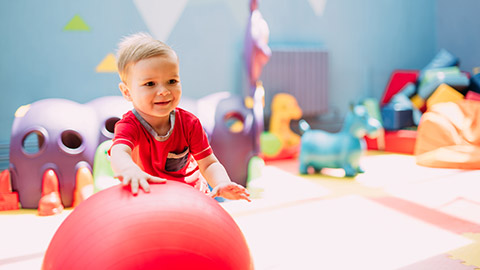
Children who are engaged and active are less likely to display challenging behaviours.
The physical environment at the service or centre needs to provide developmentally appropriate materials and equipment so that children do not become bored or frustrated — which is likely to result in challenging behaviour.
Activity – The impact of environment
To make sure that children are engaged it is important to:
- provide interesting and age-appropriate equipment and materials
- make sure that there are plenty of opportunities for outdoor play
- set up the environment so that children can engage according to their abilities and interests
- provide sufficient materials and equipment
- balance children’s need for sameness and variety by making appropriate changes to the environment and materials and equipment in it
- model care of equipment and materials and help children learn to care for them
- limit the number of children in areas appropriately
- give children opportunities for independent and solitary play
- arrange the environment so that there is easy movement within and between areas
- set up environments that give children choices about working and playing alone, with one or two other children, or being part of a larger group and that support engagement and concentration
- make sure that there is enough space overall so that children have choices about being together.
Activity - Analyse the physical environment
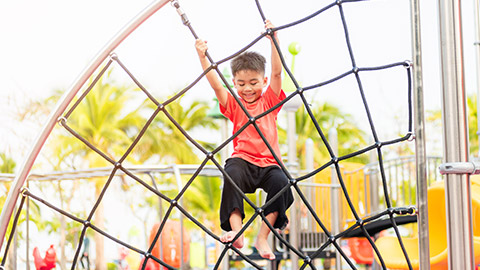
Think about your service or centre. What is the physical environment like?
- What do they do well?
- Do they have activities for children to choose and self-direct?
- Is the space one that sparks imagination and creativity?
- Montessori places a large emphasis on cleanliness, how does your service or centre prioritise that?
- Are there physically stimulating activities outside?
- What about the colour scheme? Do you think that reflects the culture of the students it serves?
- What else stands out to you as a contributing factor to a healthy physical environment in which children can learn best?
- What could you suggest to improve the physical environment?
- How will those changes make a positive impact on learning?
Post your answers in a journal post and publish for your peers. Read other posts for inspiration and a glimpse into other centres.
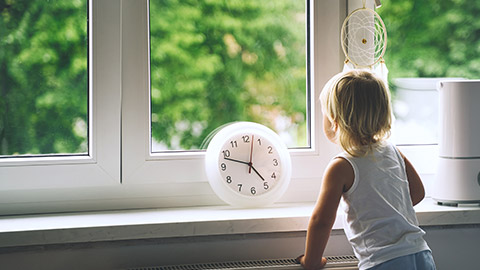
In planning an educational or recreational program for children, care must be taken to ensure the children are set up for success from the start of their day to the time they go home at the end of it.
- Ensure routines or transition times are relaxed, and children are not rushed.
- Allow for flexible routines, e.g., allowing a child to eat when they are hungry.
- Maximise choices throughout the day. For example, if there are children who do not sleep during rest time provide them with a choice of quiet activities instead
- Provide many child-initiated experiences.
- Organise the day into big ‘chunks’ of time so that children have sufficient time to engage in experiences.
Activities - A typical day
Create a schedule for a typical day at your centre or homebased service.
- Open this template in Microsoft Word or Google Docs.
- Create a typical day's schedule for each of the three age ranges, infants, toddlers, and young children. Use your work placement as a guide, but feel free to make it your own.
- Start your 'day' from when you start, and in the column provided, write what you as Kaiako are doing, and in the next column write out the planned activity for the children - use specifics but not too much detail. The guidelines above will help you to map out the day.
- Once you have completed your 3 'typical days' create a journal post and upload your work. Take a look at how your peers are spending their days and place respectful comments to share your feedback or inspiration.
Activity detail
Using one of the activities that you outlined in your template, create a more detailed timeline/plan of how the activity will run. Including section times, what you plan for the children to be doing, resources required at each part of the activity and your role in supporting the activity — describe what you are doing while the activity is going on.
Every children’s service will need to have a range of behaviour guidance strategies that help children learn to guide their own behaviour.
To work, age and stage-appropriate behaviour strategies must be used consistently — the same way for the same behaviours, for all of the children by all staff members at the centre.
Using the techniques shown below, the aim is for children to learn acceptable behaviour and develop their own self-control over time, relying less on adults to know how to behave in various settings and activities.
- Establish positive relationships, which are the foundation for building children’s self-respect, self-worth and feelings of security.
- Observe children to identify triggers for challenging behaviours. Pay attention to the child’s developmental level and any program issues that may be impacting the behaviour.
- Use positive approaches to behaviour guidance. Some of these include positive acknowledgement, redirection, giving explanations, encouragement, giving help, collaborating to solve problems, and helping children to understand the consequences and impact of their behaviour.
- Support children by providing acceptable alternative behaviours when challenging behaviour occurs.
- Ensure limits are consistent, carried out in a calm, firm manner, and followed through. Help children learn to behave within the limits.
- Involve the family and the child appropriately to help address challenging behaviour.
- Use other professionals when necessary, to help with behaviour guidance.
- Identify children’s strengths and build on them.
- Collaborate with other staff members and management to ensure everyone uses the techniques consistently.
Activity – Behaviour strategies in practice
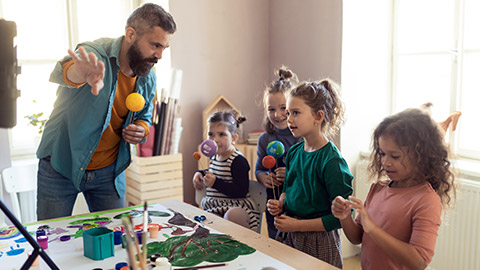
Our response affects the outcome
We can make matters worse, or we can smooth things out by the way we respond or react to children that are pushing limits.
Read through these questions carefully. They may be helpful to consider so that you are able to respond appropriately to the situation.
- What are the possible causes for the behaviour?
- Would the behaviour be addressed by the child developing some new skills?
- Is the behaviour appropriate for the child’s age or developmental level?
- What is the goal of the behaviour? What is the child trying to communicate?
- Is the environment or the program contributing to the behaviour?
- What are my expectations about appropriate behaviour? Are they suitable in the circumstances? Are my interactions contributing to the behaviour?
- Are there triggers for the child’s behaviour? What happened before the behaviour occurred? Are there times or situations when the behaviour is more likely to occur?
- Is there a change in the child’s life that is affecting their behaviour?
- Do I need to seek assistance from another professional or engage or seek external support?
- Are all staff members aware of the approach to behaviour guidance and consistent in using the approach?
Activity – Watch and reflect
- Watch the following video. Although it is not in an ECE setting, it is still relevant to the topic.
- Identify some of the reasons behind the poor behaviour and suggest strategies to overcome it. Use the questions above to come up with ideas.
- Share your response with the class in the forum.
